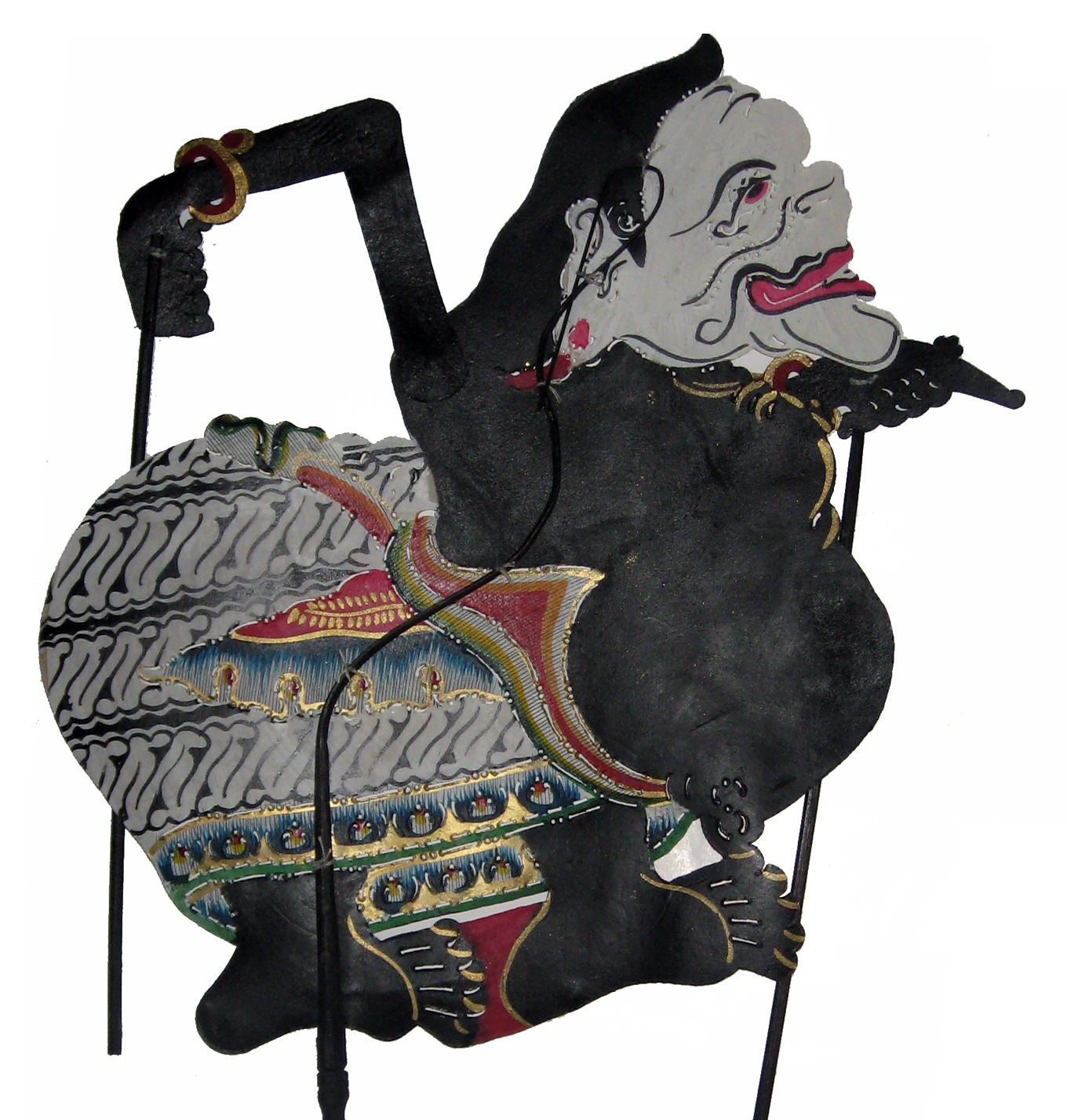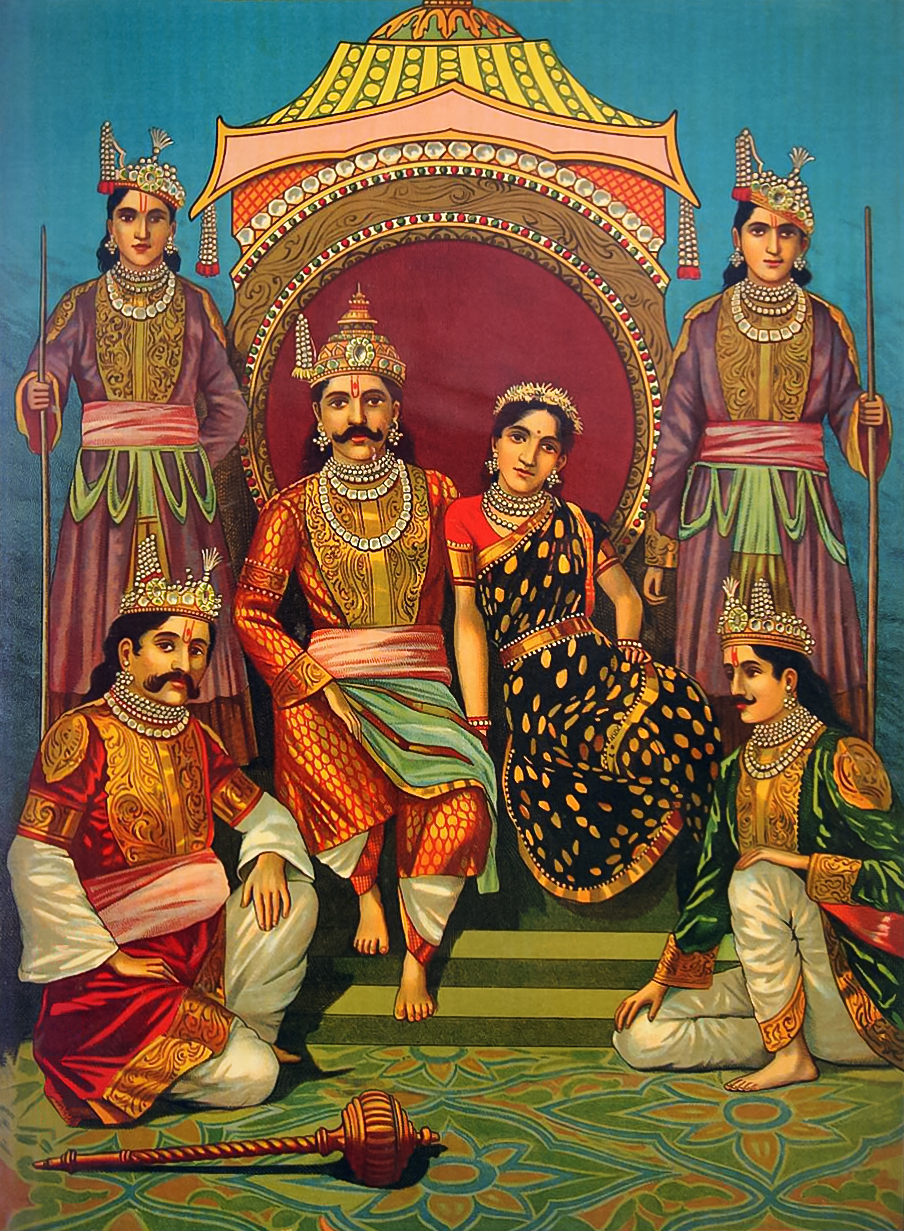|
Petruk
Petruk (Javanese script: ꦥꦺꦠꦿꦸꦏ꧀) is a character in traditional Javanese puppetry, or ''wayang''. He is one of the '' Punokawan'', four comedic figures common in the medium. Depiction Petruk is one of the four '' Punokawan'', together with Semar (the leader/father figure), Bagong, and Gareng; Petruk acts as the middle child. They are portrayed living together as a harmonious family. The Punokawan, often referred to as clowns in English, provide comic relief in the stories they are in, but also serve to speak to the audience and convey ideas of the ''dhalang'' (puppeteer), including social criticism. Petruk is depicted as having lengthy limbs and a long nose; his nose is generally considered his most distinctive feature. In ''wayang'' performances the ''dhalang'' generally provides a "warrior's voice" for Petruk, as opposed to the nasal voice used for his brothers. He is married to Dewi Ambarawati, whom he won the right to marry after defeating four other suitors ... [...More Info...] [...Related Items...] OR: [Wikipedia] [Google] [Baidu] |
Semar Gugat
''Semar Gugat'' (Indonesian for ''Semar Accuses'') is a stage play written by Nano Riantiarno for his troupe Teater Koma. It follows the traditional ''wayang'' character Semar as he attempts— and fails— to take revenge against Arjuna and Srikandi for humiliating him by cutting off a lock of his hair while they are under the influence of the demon queen Durga. Completed in mid-1995, the play consists of 559 lines of dialogue spread through 30 scenes. ''Semar Gugat'' has been read as a critique of the New Order government under president Suharto. It was first performed on 25 November 1995 after the government withheld permission for several months. After Teater Koma gave an initial two-week run, it was adapted by various amateur groups. In 1998 Riantiarno won a S.E.A. Write Award for the work. Plot The kingdom of Amarta is preparing for the wedding of Arjuna and Srikandi. The Punakawans—Semar, his wife Sutiragen, and their children Gareng, Petruk, and Bagong ... [...More Info...] [...Related Items...] OR: [Wikipedia] [Google] [Baidu] |
Punokawan
In Javanese , the () or () are the clown servants of the hero. There are four of them – Semar, Petruk, (), and (). Semar is the personification of a deity, sometimes said to be the () or guardian spirit of the island of Java. In Javanese mythology, deities can only manifest themselves as ugly or otherwise unprepossessing humans, and so Semar is always portrayed as short and fat with a pug nose and a dangling hernia. His three companions are his adopted sons, given to Semar as votaries by their parents. Petruk is portrayed as tall and gangling with a long nose, Gareng as short with a club foot, and Bagong as obese. The always appear in the second act of a performance – ''pathet sanga'' – as servants to the hero of the story regardless of who that hero is. Similar characters appear in other Indonesian wayang and theatrical traditions, including those of Bali Bali (English:; Balinese language, Balinese: ) is a Provinces of Indonesia, province of Indonesi ... [...More Info...] [...Related Items...] OR: [Wikipedia] [Google] [Baidu] |
Wayang
( , ) is a traditional form of puppet theatre play originating from the Indonesian island of Java. The term refers both to the show as a whole and the puppet in particular. Performances of wayang puppet theatre are accompanied by a ''gamelan'' orchestra in Java, and by '' gender wayang'' in Bali. The dramatic stories depict mythologies, such as episodes from the Hindu epics the ''Ramayana'' and the ''Mahabharata'', as well as local adaptations of cultural legends. Traditionally, a is played out in a ritualized midnight-to-dawn show by a , an artist and spiritual leader; people watch the show from both sides of the screen. performances are still very popular among Indonesians, especially in the islands of Java and Bali. performances are usually held at certain rituals, certain ceremonies, certain events, and even tourist attractions. In ritual contexts, puppet shows are used for prayer rituals (held in temples in Bali), ritual (cleansing children from bad luck), and ri ... [...More Info...] [...Related Items...] OR: [Wikipedia] [Google] [Baidu] |
Semar
Semar (Javanese script: ꦱꦼꦩꦂ) is a character in Javanese mythology who frequently appears in wayang shadow plays. He is one of the punokawan (clowns) but is divine and very wise. He is the Hyang, dhanyang (guardian spirit) of Java,Geertz, 23. and is regarded by some as the most sacred figure of the wayang set.Holt, 144. He is said to be the god Sang Hyang Ismaya in human form.Budihardja, "Grepen uit de Wajang," ''Djawa'' II (1922), 22-23; cited in Holt, 145. The name Semar is said to derive from the Javanese language, Javanese word ''samar'' ("dim, obscure, mysterious"). He is often referred to by the honorific, "Kyai Lurah Semar" ("the venerable chief"). Description In depictions, Semar appears with a flat nose, a protruding lower jaw, a tired eye, and a bulging rear, belly, and chest. He wears a checkered hipcloth, symbolizing sacredness. Like the other panakawan, the Wayang#Wayang kulit, wayang kulit puppet does not have the elaborate openwork and ornamentation char ... [...More Info...] [...Related Items...] OR: [Wikipedia] [Google] [Baidu] |
Mahabharata
The ''Mahābhārata'' ( ; , , ) is one of the two major Sanskrit Indian epic poetry, epics of ancient India revered as Smriti texts in Hinduism, the other being the ''Ramayana, Rāmāyaṇa''. It narrates the events and aftermath of the Kurukshetra War, a war of succession between two groups of princely cousins, the Kauravas and the Pandava, Pāṇḍavas. It also contains Hindu philosophy, philosophical and devotional material, such as a discussion of the four "goals of life" or ''puruṣārtha'' (12.161). Among the principal works and stories in the ''Mahābhārata'' are the ''Bhagavad Gita'', the story of Damayanti, the story of Shakuntala, the story of Pururava and Urvashi, the story of Savitri and Satyavan, the story of Kacha (sage), Kacha and Devayani, the story of Rishyasringa and an Ramopakhyana, abbreviated version of the ''Rāmāyaṇa'', often considered as works in their own right. Traditionally, the authorship of the ''Mahābhārata'' is attributed to Vyasa, Vy ... [...More Info...] [...Related Items...] OR: [Wikipedia] [Google] [Baidu] |
Nano Riantiarno
Norbertus Riantiarno (better known as Nano Riantiarno or N. Riantiarno; 6 June 194920 January 2023) was an Indonesian actor, director, and playwright. While in high school, he studied under Teguh Karya and acted in several movies and plays, until he eventually established his own theatre troupe, Teater Koma, in 1977. His works, with their highly political messages, were often censored by Suharto's New Order government. In 1998 he won the SEA Write Award for his play ''Semar Gugat''. Biography Riantiarno was born in Cirebon, State of Pasundan on 6 June 1949, to M. Albertus Sumardi, a railway employee, and Agnes Artini; his twin brother was named Pujo Purnomo. He attended State Elementary School IV from 1955 to 1961, followed by State Junior High School II from 1961 to 1964. He then studied at State Senior High School I and II; during this time, he joined the Tunas Tanah Air troupe and read poetry at the local RRI station. After graduating from high school, Riantiarno left ... [...More Info...] [...Related Items...] OR: [Wikipedia] [Google] [Baidu] |
Pandawa
The Pandavas (Sanskrit: पाण्डव, aɳɖɐʋᵊ IAST: Pāṇḍava) is a group name referring to the five legendary brothers, Yudhishtira, Bhima, Arjuna, Nakula, and Sahadeva, who are central figures of the Hindu epic ''Mahabharata''. They are acknowledged as the sons of Pandu, the King of Kuru Kingdom, Kuru, but were fathered by different ''Deva (Hinduism), Devas'' (gods) due to Pandu's cursed inability to naturally sire children. In the epic, the Pandavas married Draupadi, the princess of Panchala, and founded the city of Indraprastha after the Kuru Kingdom was split to avoid succession disputes. After the split, the other part of the kingdom was ruled by their cousins, the Kauravas. However, the Pandavas lost their kingdom to Duryodhana (eldest and king of the Kauravas) when Yudhishthira gambled it away during a game of dice. The bet Yudhishtira agreed to was that the Pandavas would hand the kingdom over to the Kauravas and go into exile for 12 followed by an year i ... [...More Info...] [...Related Items...] OR: [Wikipedia] [Google] [Baidu] |
Dutch East Indies
The Dutch East Indies, also known as the Netherlands East Indies (; ), was a Dutch Empire, Dutch colony with territory mostly comprising the modern state of Indonesia, which Proclamation of Indonesian Independence, declared independence on 17 August 1945. Following the Indonesian National Revolution, Indonesian War of Independence, Indonesia and the Netherlands Dutch–Indonesian Round Table Conference, made peace in 1949. In the Anglo-Dutch Treaty of 1824, the Dutch ceded the governorate of Dutch Malacca to Britain, leading to its eventual incorporation into Malacca, Malacca (state) of modern Malaysia. The Dutch East Indies was formed from the nationalised Factory (trading post), trading posts of the Dutch East India Company, which came under the administration of the Batavian Republic, Dutch government in 1800. During the 19th century, the Dutch fought Royal Netherlands East Indies Army, many wars against indigenous rulers and peoples, which caused hundreds of thousands of d ... [...More Info...] [...Related Items...] OR: [Wikipedia] [Google] [Baidu] |
Dhalang
The dhalang or dalang (; ) is the puppeteer in an Indonesian performance. In a performance of , the dalang sits behind a screen () made of white cotton stretched on a wooden frame. Above his head, hanging from beams attached to the top of the screen is the lamp (), which projects the shadows onto the screen. In front of the dhalang is a stage (), traditionally made from the trunk of a banana tree, into which the sharpened control rods of the puppets can be pushed to keep them in position during the performance. To his left is the puppet chest (), and to his right is the puppet chest's lid, on which the puppets sit ready for use. In addition to moving the puppets and speaking their lines, the dalang is also responsible for giving cues to the gamelan. This is done principally by playing the kepyak, a metal plate or set of plates played with his foot, or by rapping on the puppet chest () with a wooden mallet held in the left hand. The art of puppetry () was traditionally hande ... [...More Info...] [...Related Items...] OR: [Wikipedia] [Google] [Baidu] |
Nobility
Nobility is a social class found in many societies that have an aristocracy. It is normally appointed by and ranked immediately below royalty. Nobility has often been an estate of the realm with many exclusive functions and characteristics. The characteristics associated with nobility may constitute substantial advantages over or relative to non-nobles or simply formal functions (e.g., precedence), and vary by country and by era. Membership in the nobility, including rights and responsibilities, is typically hereditary and patrilineal. Membership in the nobility has historically been granted by a monarch or government, and acquisition of sufficient power, wealth, ownerships, or royal favour has occasionally enabled commoners to ascend into the nobility. There are often a variety of ranks within the noble class. Legal recognition of nobility has been much more common in monarchies, but nobility also existed in such regimes as the Dutch Republic (1581–1795), the Republic ... [...More Info...] [...Related Items...] OR: [Wikipedia] [Google] [Baidu] |






